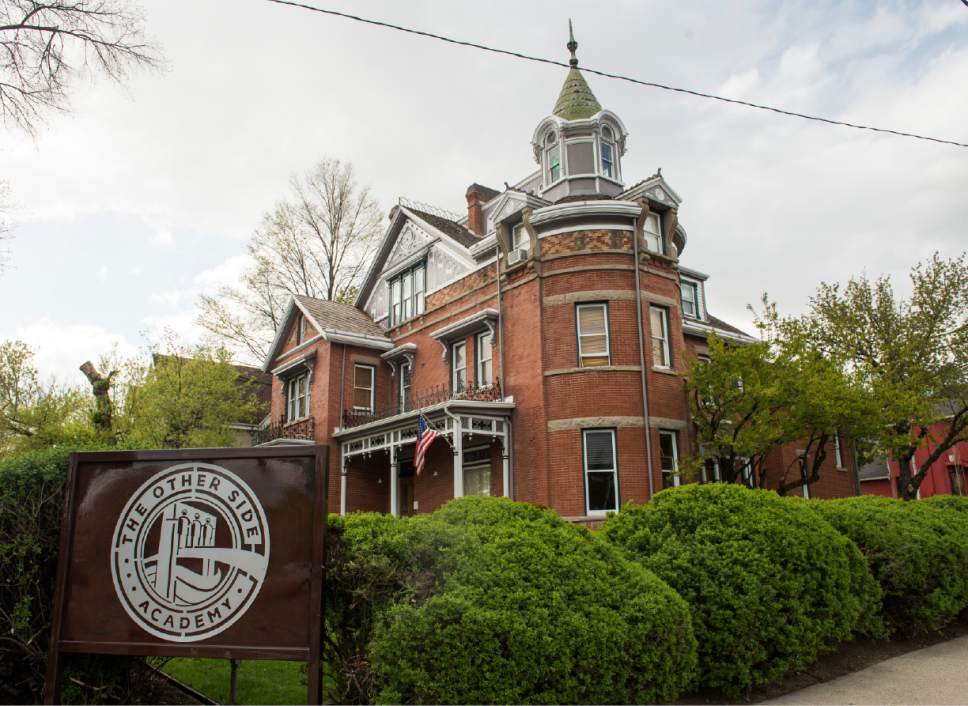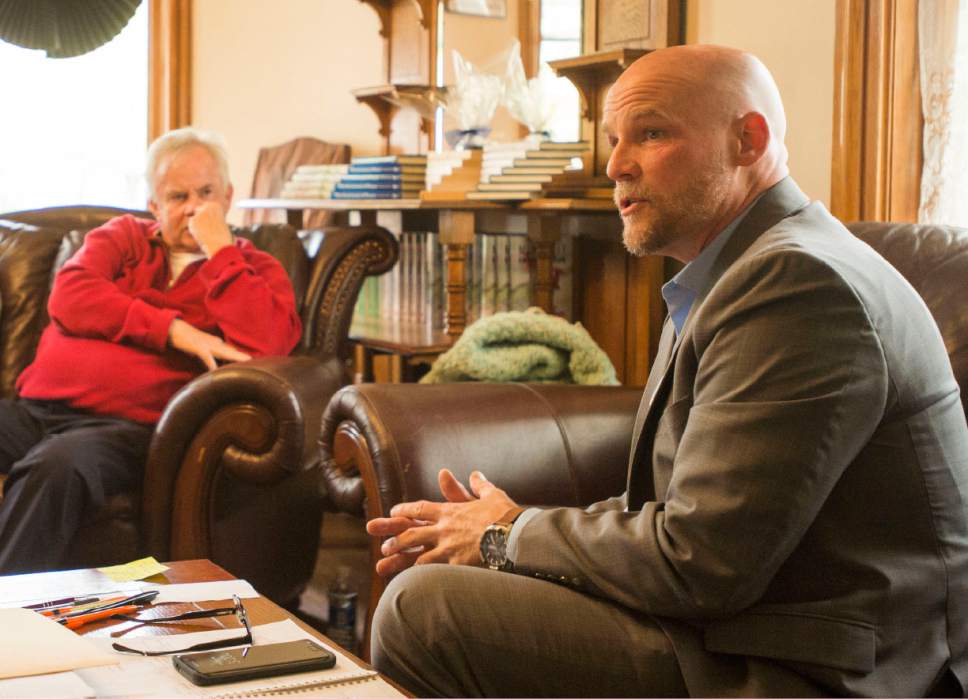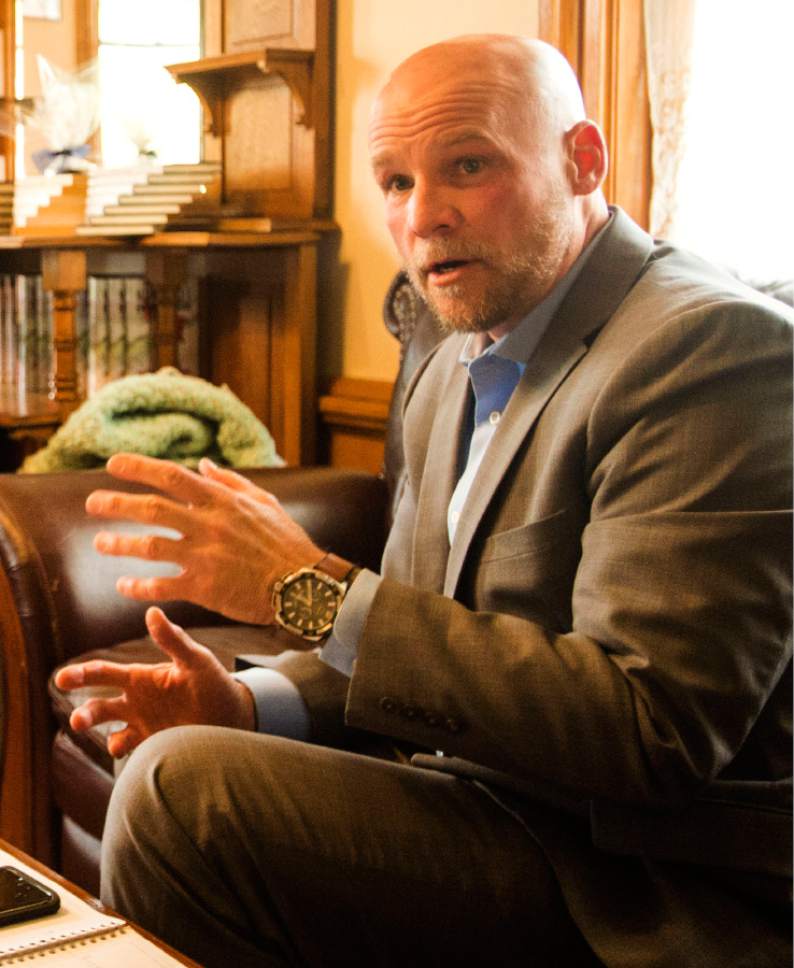This is an archived article that was published on sltrib.com in 2017, and information in the article may be outdated. It is provided only for personal research purposes and may not be reprinted.
After a unilateral decision from the county last month, South Salt Lake leaders will be saddled with a homeless shelter that they didn't want. But rather than keep fighting it, the city is trying instead to have some say in what the facility might look like and how it would operate.
The goal? Avoid replicating the chaos that currently surrounds The Road Home in downtown Salt Lake City, where criminals hide out among the homeless and people camp in the streets, says South Salt Lake Councilwoman Portia Mila.
Mila, joined by Councilwoman Sharla Beverly, began shopping around Friday for ideas and models that might work for the planned shelter at 3380 S. 1000 West — a strategy she sees as making the best of a bad situation. Two earlier announced 200-bed centers will be in Salt Lake City at 131 E. 700 South and at 275 W. High Ave. (1400 South).
The councilwomen made their first stop at The Other Side Academy, a two-year rehabilitation program started in 2015 that's committed to reforming former inmates, drug addicts and homeless individuals. The school's managing director, Dave Durocher, suggests that "just giving them a roof is not going to solve the problem."
The academy focuses on teaching self-reliance. The participants — called "students" — earn their housing, as well as a place in the program, by working at one of four revenue-generating businesses operated by the school: a lawn-care provider, a food truck, a window-cleaning service and a moving company.
Posters hung up around the facility — "Make and keep promises" and "Embrace humility" — serve as reminders to the 63 people who live and work there. Durocher sums up the program in 12 words: "Get up. Go to work. Have a good attitude. Go to bed."
"These are great ideas," Mila noted.
On average, Durocher said, the program's participants have been arrested 23 times. Plenty come straight from jail or prison.
Most of the staff, too, have previously experienced the same trials as those in the school. Durocher, a former drug addict, was arrested for the first time at age 13. He spent 20 years in and out of prison before landing at a house similar to The Other Side Academy in California.
"I did a two-year prison term, got out for two months. I did a five-year prison term, got out for two months," Durocher ticks off. "I did a six-year prison term, got out for four months. And then I did a 10-year prison term."
Those who join the academy have to want to change, he said, or it doesn't work. That left Beverly questioning: "Could this be replicated on a larger scale?"
The shelter to be built in South Salt Lake will house 300 individuals. Mila fears the school's philosophy wouldn't apply to a crowd that large and disparate, nor could the facility employ the same kind of staff.
"Unfortunately, with 300 beds, what we're going to get is some people who want to be there and want to change and want to do what you're doing," she said. "But there will be others who just want to be there for the 30 to 60 days that they can be."
Durocher agreed: "I don't know that there's a lot of help for people who do not want help."
Still, Mila hopes South Salt Lake will be able to create a list of criteria for those allowed inside the shelter. It's unclear just how much say council members or the mayor will have in the operations of the resource center; while it will be housed in the city, the facility will be owned by Shelter the Homeless, a private nonprofit.
"I would fight like Hades to get [the academy] to be in charge of one of your resource centers," joked Scott Howell with the Pioneer Park Coalition, an advocacy group for developers, shop owners and residents in the Rio Grande District that's been vocal about the growing homeless population in Salt Lake City.
Howell suggests The Road Home, 210 S. Rio Grande St., experiences lawlessness and disorder because there is no discipline for the people who stay there.
"The problem isn't the homeless," he said. "It's the way it's run."
Mila and Beverly looked somewhat defeated after Friday's meeting but tried to remain cautiously optimistic. For their next tour, South Salt Lake Council members plan to look at a Midvale homeless shelter for families as they continue to collect ideas.
Twitter: @CourtneyLTanner







